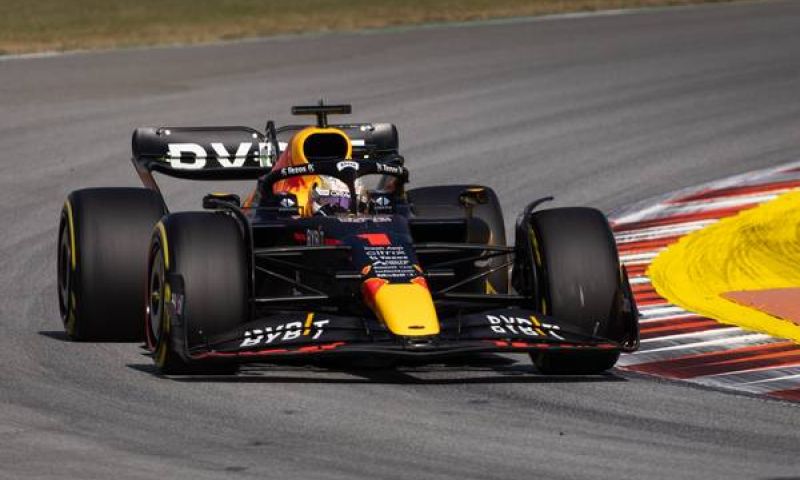Long run Analysis | Mercedes knock on the door, but Verstappen leads
F1 News

It's been a fascinating first day in the Spanish Grand Prix weekend. For once, Aston Martin stole the headlines with speculations over them copying the Red Bull car. On the track, Charles Leclerc seems to have the best odds for qualifying, but Max Verstappen and Red Bull Racing have the better race pace. Perhaps crucially in the Spanish sun, Red Bull's tyre management could be the difference. Here is the Friday analysis from GPblog.
Aston Martin's tracing paper?
Aston Martin arrived in Barcelona with a completely different car. Before they even landed, Red Bull Racing had a notification from the FIA that a car looks similar to theirs and needed some data to compare. The FIA have given it the green light, but Red Bull suspects some IP has been stolen and used. A number of employers moved from Red Bull to Aston Martin in recent weeks and therefore Christian Horner is raising some concerns relating to the matter.
In the graphic below, there are some similarities to the cars. But is it as significant as they make out?
View this post on Instagram
Best sectors
It's incredibly close in Barcelona, and it looks like Mercedes have put themselves in the mix with these updates. Less than one-tenth separates the World Championship rivals in the first sector which was expected. The circuit features parts that favour both cars, with a long straight and a medium speed turn three. Sector two falls towards Ferrari, as expected with a series of medium-speed corners.
This is where Leclerc gets most of his advantage, gaining three tenths on Verstappen through these sequence of corners. The last sector is very close, providing Red Bull have continued to improve their car in the slow-speed corners. It's also very dependent on the setup. Tyre degradation is high on this track, and the tyres are usually screaming hot in the last sector. Perhaps this is an indication that Red Bull have a slightly better set-up for the tyres.
As shown in the above graphic, Verstappen has the third-best ultimate lap time. The hypothetical lap time recorded if all the best sectors were added together. Verstappen is seemingly much closer to Leclerc than it looks at first glance. Once again, it's clear Carlos Sainz is getting beaten by his teammate. In his home race, Sainz will be hoping for much better performances when the meaningful sessions begin.
As always, engine modes and fuel loads are totally unknown on Fridays. An early indiction again puts Ferrari in front on a single-lap pace, with Red Bull having a better set-up for the race. This was exactly the same case for the Miami Grand Prix. However, it's much harder to overtake in Spain.
View this post on Instagram
Long runs
| Driver | Tyres | Average Long Run Pace |
| Verstappen | Medium (12 laps) | 1:26.0 |
| Leclerc | Medium (11 laps) | 1:26.68 |
| Hamilton | Medium (7 laps) | 1:26.50 |
| Russell | Medium (8 laps) | 1:26.60 |
The long runs provide further evidence that Red Bull have the better race pace. The Dutchman is half-a-second clear of the next best on the long runs. That's a big advantage, especially considering the number of laps Verstappen did on those tyres. Unless Ferrari are hiding something, they look vulnerable to an undercut from their rivals.
The long-run data also shows that Mercedes are well in the mix for a podium. Perhaps a move to the top step of the podium is still too far away at this stage, but Hamilton and Russell are right on the tail of Leclerc. That being said, in Miami Mercedes impressed but dropped backwards on Saturday. Reports suggest that they understand porpoising now, and Saturday will be the confirmation of that.
Mercedes will be very pleased with the speed trap times. Porpoising has been limiting Mercedes' straight-line performance all season, but this is the best evidence that they've sorted it. Remarkably in Bahrain, all Mercedes customer cars found themselves in the bottom part of the speed trap standings. Just a few weeks on, Vettel's Aston Martin is at the top with Hamilton and Russell the next best. Hamilton and Vettel both reached 317 km/h, with Russell hitting the 316km/h mark. Both Ferrari drivers and Verstappen were 1km/h slower.